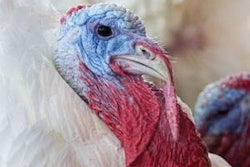This year is expected to be the year when even the most sluggish of economies pulls out of recession. The upturn in activity should start to feed through into consumers’ pockets, even if that does not become apparent until later in the year.
And assuming the upturn doesn’t stall, there should be an increase in pork consumption. There are no wild predictions for the pork industry this year, but there is a general feeling that it will expand.
Despite the recession, and the added complication of protectionist measures against H1N1, viewed globally, last year was not as bad as it could have been for the pig industry. According to the Food and Agriculture Organization, world pig meat production is thought to have risen by almost 2% last year to reach 106.5 million tons.
However, this increase was far from evenly spread, with China, which accounts for 45% of total output, responsible for the majority of growth. While below the growth rate of previous years, production in China is thought to have risen by 5% reaching 49.7 million metric tons.
Analysts believe that China’s pig sector has now reached maturity and that future production increases will be more modest than in the past. Growth is expected to be in the region of 3.5%, and due largely to productivity gains.
The Chinese pig industry is in the process of restructuring, with significant investments in large plants in central, southwest and coastal areas of the country. This means that as China’s consumers are ever more able to purchase greater quantities of their favourite meat, the meat that they buy will be produced on the home market, potentially causing difficulties for those countries that have been exporting to China.
Brazil and Russian producers are also thought to have ended the year higher, due to higher herd numbers; however, the rest of the world is thought to have fared less well.
Regional variation
This overall positive figure hides big regional variations as demonstrated by the large decline in international trade in pig meat last year. The FAO believes that trade was 10% lower in 2009 compared with 2008 – a volume decrease of 5.5 million metric tons.
Changing global production patterns were a major driver behind this fall. China, for example, is thought to have reduced its imports by 60% last year. While the slowing of the Chinese economy undoubtedly had an influence on this reduction, of greater importance was increased home production.
Similarly, Russia not only had to trade with a weakened currency but, additionally, the government’s import substitution strategy and sanitary import restrictions for non-heat treated meat are thought to have depressed imports last year. Imports by Japan and the Republic of Korea were also lower.
Pig meat in the European Union, which accounts for 21% of global production, is thought to have decreased by 3%, constrained by lower animal inventories, brought about by high feed costs and stagnant product prices in 2008. Europe’s exports are thought to have fallen by 27%.
In the US, production is also thought to have ended the year lower, and low financial returns in Canada have acted as a drag on growth. In Mexico, where producer prices were depressed by the negative reactions of consumers to H1N1, output is thought to have contracted by 1%.
The outlook for this year is a further 2% increase, with global production reaching 108.7 million metric tons.
Output in China is expected to come in at around 3.6% higher, while in the EU production may be some 2% higher, helped by lower feed prices. However, as far as the EU is concerned, there are still questions surrounding the impact of new animal welfare legislation.
Production is also expected to be higher this year in Brazil and the Russian Federation. In the US, where analysts have warned about the negative impact that Country of Origin Labeling may have on the import of live animals from Canada, the USDA anticipates a production decline of over 2%.

















